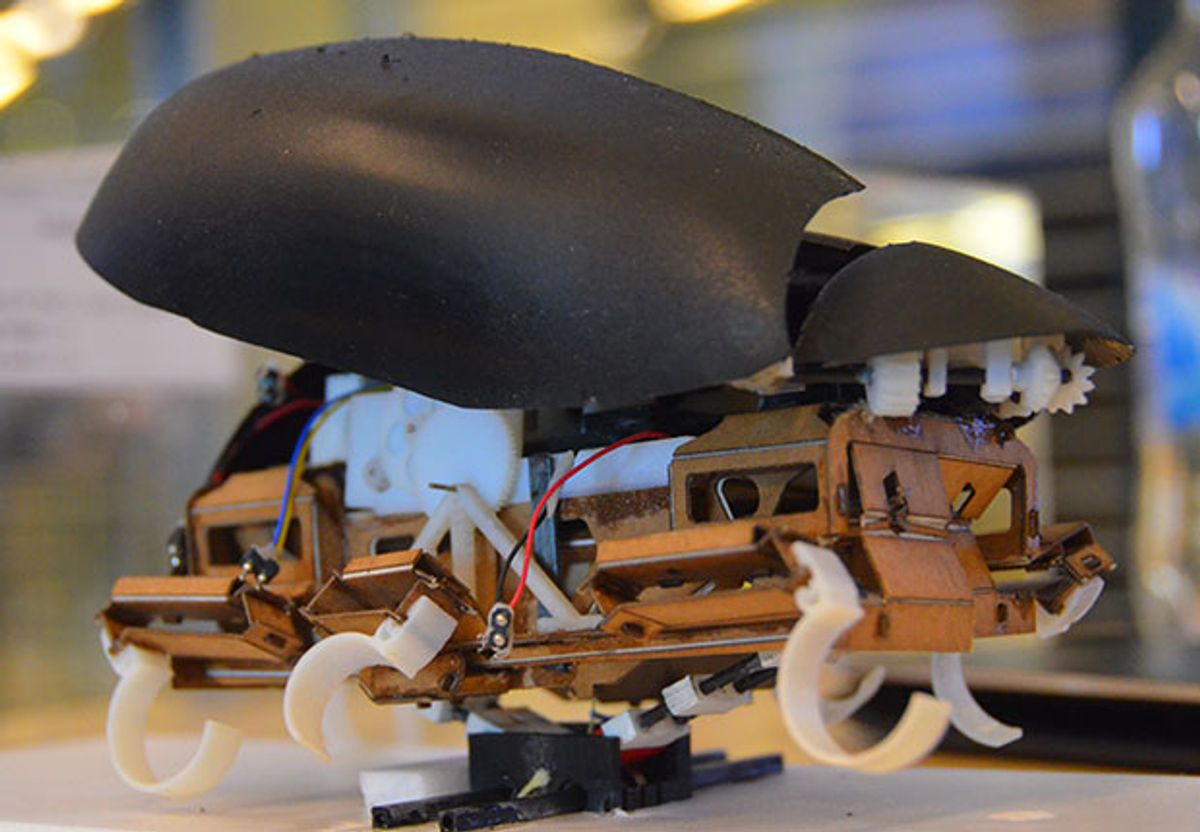In the quest for the most capable robotic bug (which is a quest that many roboticists seem to be on, because robotic bugs are nifty), some of the most exciting designs are inspired by the dynamic, multi-modal ways in which insects are conquering the world. Combining skills like running with skills like jumping can make little robots much more efficient movers, allowing them to go farther on a charge as well as helping them surmount obstacles and rough terrain.
Most of the small jumping robots we’ve seen before use a spring mechanism with a latch on it. The latch makes the spring state binary: the spring gets all wound up, the latch holds it, and then disengages on command, releasing all of the energy in the spring in one go. You can get a lot of power this way, but it’s an all or nothing sort of thing, so the magnitude (height, distance, whatever) isn’t controllable.
At Seoul National University, South Korea, researchers have developed a new kind of jumping mechanism for robots that can potentially scale from itty bitty hops all the way up to aircraft carrier catapult launch (or almost). In collaboration with UC Berkeley, they’ve managed to stuff this thing into a familiar hexapedal crawler that we’re all familiar with (DASH), with the end result being a running, jumping robot called JumpRoACH that only weighs 60 grams but has an incredible 1.6 meters worth of hops.
Apparently, the robot can jump onto any of those shelves that it wants, but the video was put together at the last minute and they didn’t get a chance to film all of it. They also didn’t get a chance to properly fix the robot after it smashed itself into that table (watch until the end), which is why its wing looks a little bit funky in the picture at the top of this article.
The jumping mechanism itself consists of a diamond-shaped four-bar linkage with joints like knees. Eight latex bands are used to store energy as they stretch when the linkage is compressed, which happens thanks to a wire, a pulley, and a DC motor. In between the pulley and the motor is a bunch of gearing, including a planetary gear that acts as a clutch when the rotation of the motor reverses. This is what allows the robot to adjust its jump height: the motor can wind up the linkage to store as much energy as you like, and then reverse itself to trigger the jump.
The module by itself can manage nearly 3 meters vertically, and when crammed inside the robot (DASH is apparently mostly hollow), it can reach between 1.1 and 1.6 meters. The motor that drives the jumping mechanism also actuates those shells, which the robot uses to right itself.
Unfortunately, there are no wings under the shells yet, but we’ve already seen how much even very basic wings can benefit fast moving little robots. Actual powered flight is probably not going to be possible for this particular platform, but gliding might be, which could substantially extend the distance that the robot travels with each jump.
“An Integrated Jumping-Crawling Robot using Height-Adjustable Jumping Module,” by Gwang-Pil Jung, Carlos S. Casarez, Sun-Pill Jung, Ronald S. Fearing, and Kyu-Jin Cho, from Seoul National University and UC Berkeley, was presented this month at ICRA 2016 in Stockholm, Sweden.
Evan Ackerman is a senior editor at IEEE Spectrum. Since 2007, he has written over 6,000 articles on robotics and technology. He has a degree in Martian geology and is excellent at playing bagpipes.



